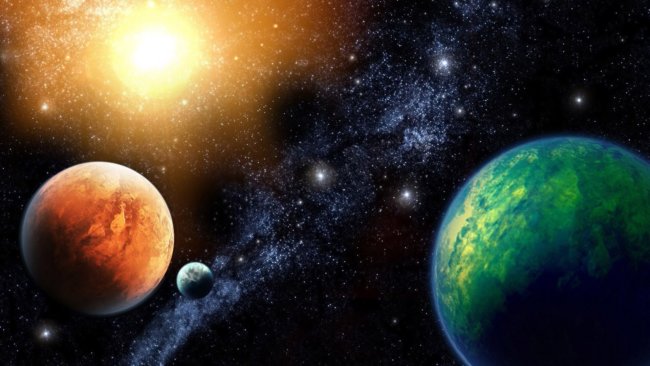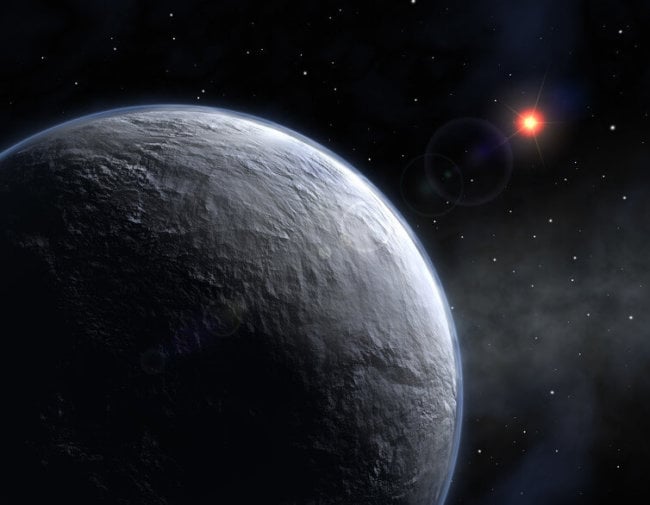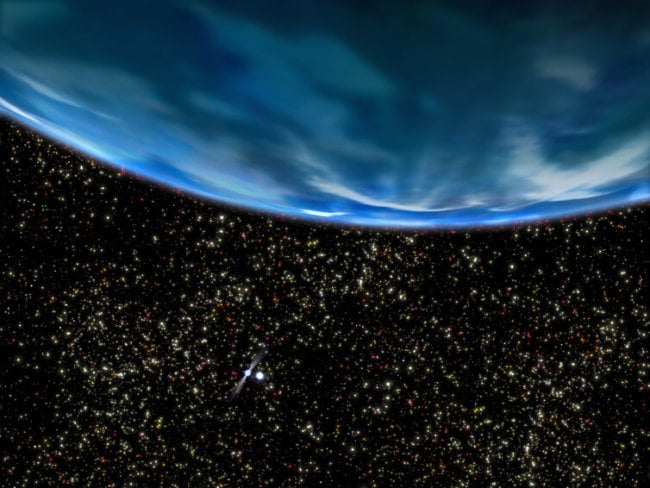
Not so long ago scientists have discovered the hottest planet in the entire history of observations — with surface temperatures in excess of such even some stars. As the search for planets outside our own Solar system, we find many other worlds with extreme features. And the ongoing exploration of our own Solar system also reveals a rather strange representatives. Before you seven strange celestial objects with unusual and outstanding features.
The hottest
How hot will the planet be, depends primarily on how close to its parent star — and how hot is the star. In our own Solar system, mercury is the closest planet to the sun, located at an average distance 57 910 000 km. The surface temperature in the afternoon reaches 430 degrees Celsius, while the surface of the sun, this value is 5500 degrees.
But stars more massive than our sun are significantly hotter. Star HD 195689, also known as KELT-9, 2.5 times more massive than the sun and has a surface temperature of 10,000 degrees. Her planet, KELT-9b, is much closer to its parent star than mercury to the sun.
Although we cannot measure the exact distance from afar, the planet goes around its star every 1.5 days (mercury completes its orbit in 88 days). On the surface of this planet temperature is striking 4300 degrees, which is hotter than the surface of many stars with a mass less than solar. Solid planet mercury would have turned into a drop of lava at that temperature. But KELT-9b, however, is a gas giant like Jupiter.
The coldest
At a temperature of just 50 degrees above absolute zero — 223 is degrees Celsius — OGLE-2005-BLG-390Lb deserves the title of coldest planet. About 5.5 times more massive than Earth, this planet is also considered to be solid. It is not too far from its parent star — about how between Mars and Jupiter in our Solar system — but her star has low mass and is cold red dwarf.
This planet is often called Hoth (the ice planet in “Star wars”). But, unlike the fictional planet, a real ice giant can’t hold a large part of the atmosphere (and life too). Because most of its gases will be frozen as snow on the surface.
The biggest
If the planet can be as hot as a star, what would be the difference between them? Stars more massive than the planets so that their bowels the processes of thermonuclear fusion as the result of the action of powerful gravitational forces in the core. A normal star like our sun burning hydrogen into helium. But there is also a type of stars called brown dwarfs, which is large enough to run the synthesis processes, but not big enough to support them. The planet is DENIS-P J082303.1-491201 b with the same unpronounceable alias 2MASS J08230313-4912012 b at 28.5 times more massive than Jupiter — and this makes it the most massive planet on the exoplanets NASA archive. It is so massive that there are disputes whether it can be called a planet (then it is to be a gas giant like Jupiter) or better to categorize it a brown dwarf star. Ironically, its parent star is also a brown dwarf.

The smallest
Kepler-37b is slightly bigger than our moon and is slightly less than mercury, and is the smallest of the discovered exoplanets. This solid world is closer to its parent star than mercury to the sun. And so, the planet is too hot to support liquid water and life on the surface.
The oldest
PRS B1620-26 b age of 12.7 billion years is the oldest of the known planets. This gas giant with 2.5 the mass of Jupiter, seem to have existed forever. Our universe is older than this planet for a billion years.
PSR B1620-26 b has two parent stars in orbit around each other, and seems to have survived them both. It remains only a neutron star and a white dwarf after the star burned out and exploded in supernovae. But because it was formed so early in the history of the Universe, it is severely not enough heavy elements like carbon and oxygen (formed later) necessary for the evolution of life.

The youngest
Planetary system V830 Tauri only 2 million years. From the parent star in the system the mass is the same as our sun, but a radius twice, which means that it has not yet fully compressed to final form. The planet is a gas giant with three fourth of the mass of Jupiter — is also still growing. It acquires a mass, colliding with other planetary bodies such as asteroids on their way, making it an unsafe place.
With the worst weather
Because exoplanets are too far from us so we could observe any weather conditions, we should pay attention to our Solar system. If you saw a giant swirling hurricanes, photographed by the spacecraft “Juno” flying over the poles of Jupiter, the largest planet in our Solar system will definitely be a good contender. However, the winner will be Venus. A planet the size of Earth, shrouded in clouds of sulfuric acid.
The atmosphere moves around the planet much faster than the planet rotates. The wind speed reaches 360 km/h the Cyclones hung on each pole. The planet’s atmosphere almost 100 times denser than Earth’s and consists of 95% carbon dioxide. Increasing the greenhouse effect gives rise to a hellish temperature of 460 degrees on the surface and it is even hotter than mercury.
Seven of the most extreme planets that we found
Ilya Hel